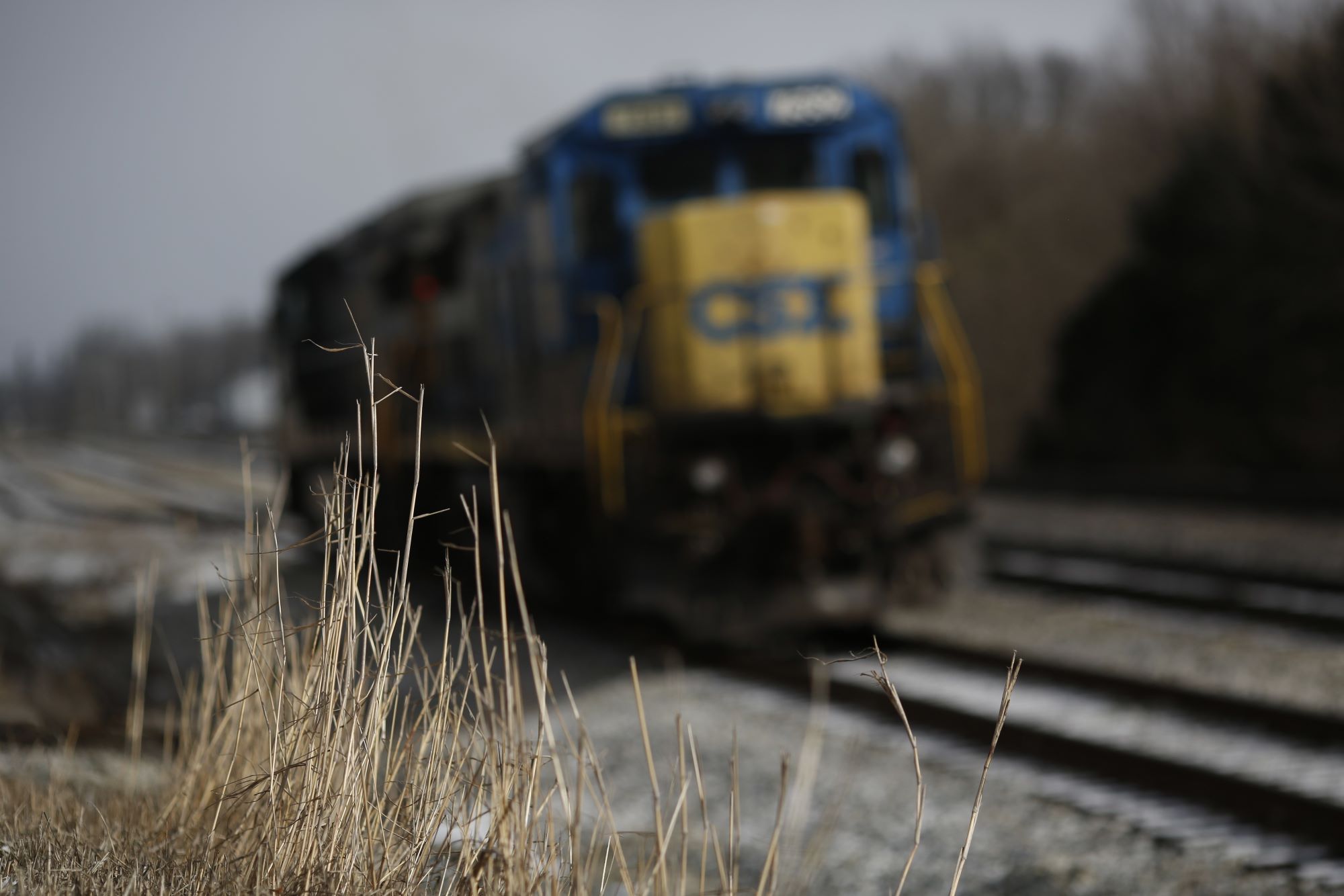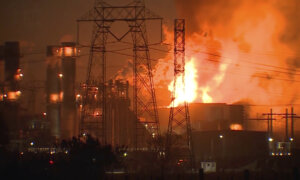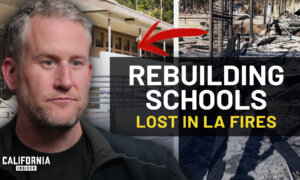Residents of a Kentucky town who were forced to evacuate on Nov. 22 after a multiple-car train derailment resulted in a chemical spill have been allowed to return to their homes.
A state of emergency was declared in Rockcastle County, Kentucky, on Nov. 22 after 16 rail cars—two of which were carrying molten sulfur—derailed north of Livingston, Kentucky.
The molten sulfur onboard the train subsequently caught fire after the cars were breached, leading to air-quality concerns. That prompted Kentucky Gov. Andy Beshear to issue a state of emergency while urging the roughly 200 residents of Livingston to evacuate the area on Thanksgiving eve.
As of Nov. 23, officials had extinguished the fire, allowing residents to return to their homes on Thanksgiving Day, according to railroad operator CSX.
Bryan Tucker, a spokesman for the company, confirmed to CBS News on Nov. 23 that “the fire is completely out.”
In an update, CSX also stated that specialized equipment had been deployed “to conduct air monitoring in the area and local authorities have determined it safe for residents to return to their homes.”
The railroad operator noted that it’s still supplying food, lodging, and other necessities to affected community members.
The Nov. 22 derailment involved 16 cars, including two that were carrying molten sulfur that lost some of their contents and caught fire when they were breached.
When molten sulfur burns, it’s generally known to release sulfur dioxide—a colorless gas with a strong odor—into the air, which led to concerns over the air quality within the area of the incident. Officials haven’t released the results of air monitoring at the area of the derailment.
Derailment Being Investigated
Two of the cars involved in the Nov. 22 derailment were also carrying magnesium hydroxide, CSX stated, although officials stressed that there’s no indication that these cars were breached.“The remaining cars were either empty or carrying non-hazardous products like grain or plastic,” the rail operator said. “CSX teams will now focus on recovering the product on the ground and removing the derailed cars. Safety is our top priority as we work to completely restore the area. The cause of the incident is under investigation.”
One crew member was treated at the scene for minor injuries following the incident but no other injuries were reported, CBS affiliate WKYT-TV reported.
According to the Centers for Disease Control and Prevention (CDC), exposure to sulfur dioxide may cause irritation to the eyes, nose, and throat, leading to choking, coughing, or nasal mucus.
Exposure to sulfur dioxide can also lead to a range of respiratory problems, depending on the concentration and length of exposure, according to the American Lung Association.
Short-term exposure can lead to shortness of breath and chest tightness, while long-term exposure can result in a reduction in the ability of the lungs to function, the association stated. Long-term exposure can be especially hazardous to children, the elderly, and people with asthma.
One Livingston resident, Evelyn Gray, told ABC affiliate WTVQ-TV that she suffered a “bad asthma attack” owing to a strong chemical smell shortly after the derailment.
“As soon as he opened the back door to come in the chemical hit me and I had a real bad asthma attack,” Ms. Gray told the publication.
In a post on X, formerly known as Twitter, on Nov. 23, Mr. Beshear thanked emergency crews and first responders who worked hard to put out the fire at the train derailment site.
“While there is still work to be done, we are thankful for the good news that our families in Livingston are able to spend the rest of Thanksgiving at home,” the governor said.









